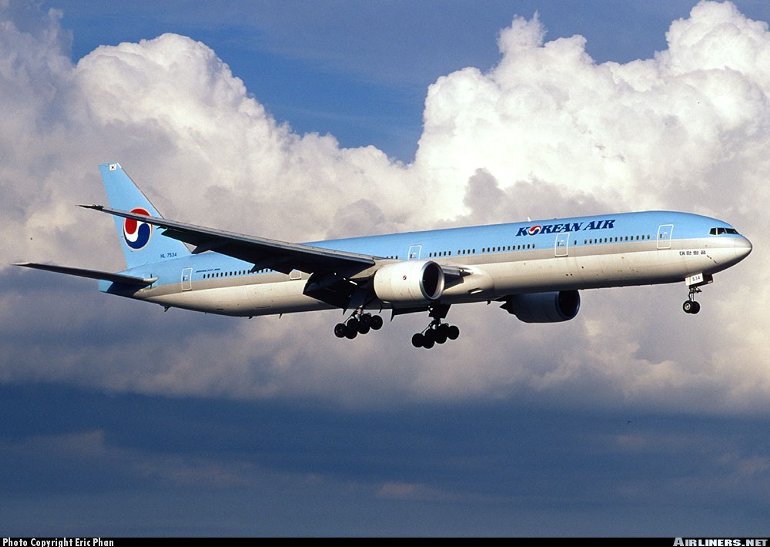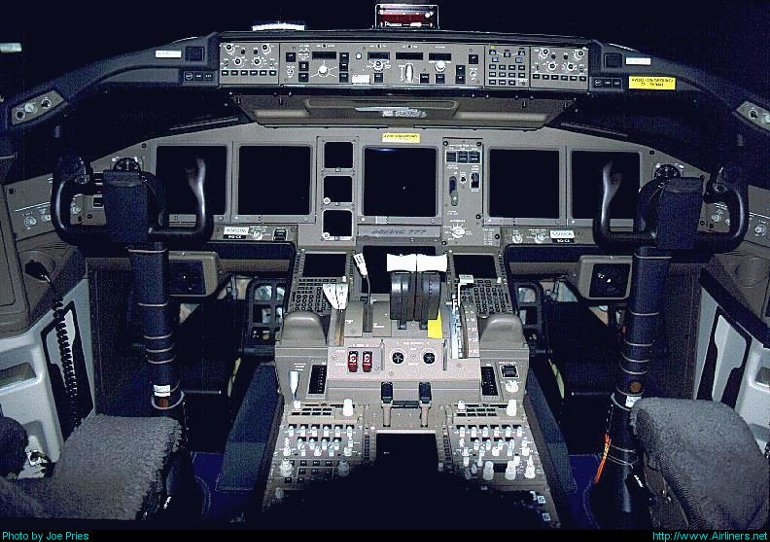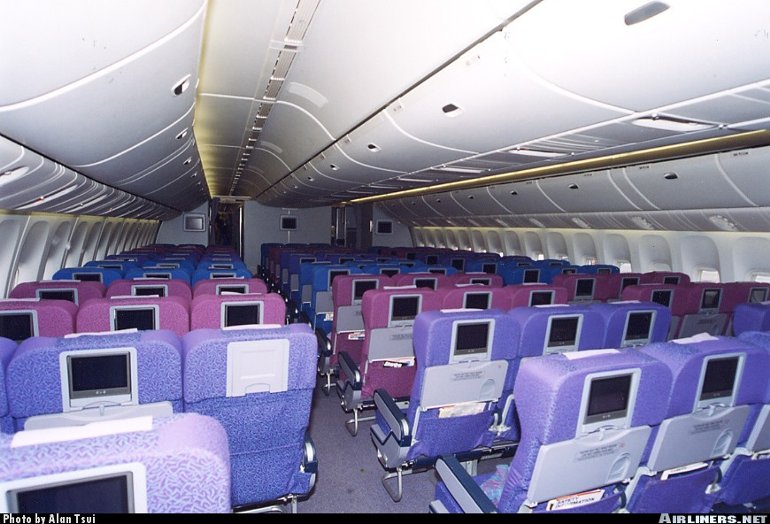Aircraft Technical Data
Boeing 777-300



| Details | |
| Country of Origin | United States of America |
| Type | Long range high capacity widebody airliner |
| History | Boeing's 777-300 is powered by the world's most powerful turbofan engines. The stretched 777-300 is designed as a replacement for early generation 747s (747-100s and 200s). Compared to the older 747s the stretched 777 has comparable passenger capacity and range, but burns one third less fuel and features 40% lower maintenance costs. Compared with the baseline 777-200 the 300 features a 10.13m (33ft 3in) stretch, comprising plugs fore and aft of the wings. The longer fuselage allows seating for up to 550 passengers in a single class high density configuration. To cope with the stretch and the up to 13 tonne (28,600lb) increased max takeoff weight the 300 features a strengthened undercarriage, airframe and inboard wing. Other changes compared with the 777-200 include a tailskid and ground manoeuvring cameras mounted on the horizontal tail and underneath the forward fuselage. Otherwise changes have been kept to a minimum to maximise commonality. Boeing publicly announced it was developing the 777-300 at the Paris Airshow in mid June 1995 where it revealed it had secured 31 firm orders from All Nippon, Cathay Pacific, Korean Airlines and Thai Airways. Later that month Boeing's board authorised production of the new aircraft. The 777-300 rolled out on September 8 1997, followed by first flight on October 16 that year. The type made history on May 4 1998 when it was awarded type certification simultaneously from the US FAA and European JAA and was granted 180min ETOPS approval. Service entry with Cathay Pacific was later in that month. Like the 777-200, a 777-300ER long range version has been developed. Changes made to the 777-300ER are more powerful General Electric GE90-115B engines (currently the world's most powerful jet engine), raked wingtips, strengthened body, wings, empennage, nose gear, engine struts and nacelles, new main landing gear, and provision for extra fuel tanks. The range, carrying 365 passengers, is increased up to 13,427km (7,250nm). Roll-out of the first 777-300ER was made on November 14 2002, followed by the first flight on February 24 2003. First delivery, to Air France, is scheduled for March 2004. |
| Powerplants | 777-300 - Either two 400kN (90,000lb) Pratt & Whitney PW-4090 turbofans, or 436kN (98,000lb) PW-4098s, or 409kN (92,000lb) Rolls-Royce Trent 892s, or 409kN (92,000lb) General Electric GE90-92Bs. 777-300ER - 512 kN (115,300lb) General Electric GE90-115B |
| Performance | 777-300 - Typical cruising speed 893km/h (482kt). Range with 386 three class passengers 10,595km (5720nm). 777-300ER - Range with 365 passengers 13,427km (7,250nm). |
| Weights | Operating empty 160,120kg (353,600lb), basic max takeoff 263,080kg (580,000lb), high gross weight MTOW 299,380kg (660,000lb). |
| Dimensions | Wing span 60.93m (199ft 11in), or folded 47.32m (155ft 3in), length 73.86m (242ft 4in), height 18.51m (60ft 9in). Wing area 427.8m2 (4605sq ft). |
| Capacity | Flightcrew of two. Typical passenger accommodation for 386 (30 first, 84 business and 254 economy) to 394 in three class arrangements, 400 to 479 in two class arrangements or up to 550 in an all economy high density configuration. Underfloor capacity for 20 standard LD3 containers or eight 2.55 x 3.17m (96 x 125in) pallets. |
| Production | Total 777-300 orders as of January 2003 stood at 121 (of which 56 300ER) with 44 delivered. |
| Related Links | Boeing 777-300 |
The backbone of this section is from the The International Directory of Civil Aircraft by Gerard Frawley and used with permission. To get your own copy of the book click here. |
|








